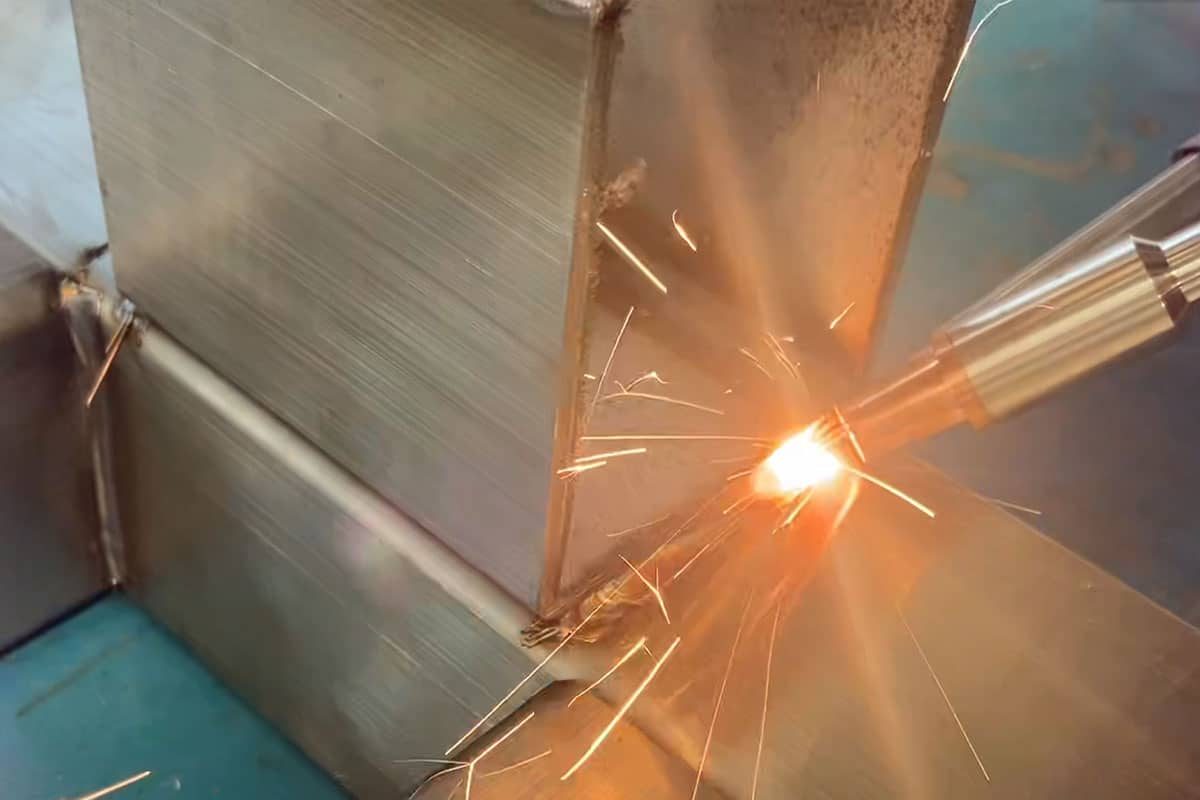
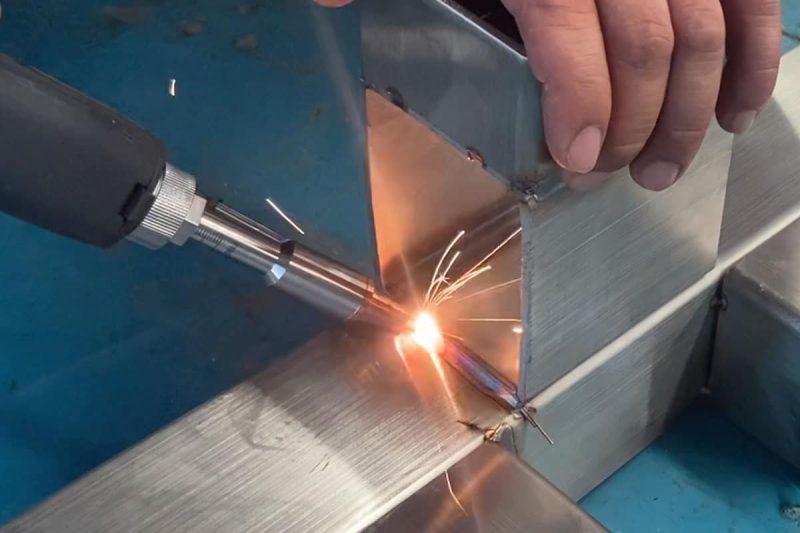
What is laser Welding?
Working principle of laser welding
What materials can laser welding be used for?
Laser welding is a versatile welding process that can be used for various materials across different industries. The suitability of laser welding depends on the material properties and the specific requirements of the application. Here are some materials commonly used with laser welding:
- Steel: Laser welding is widely used for welding various types of steel, including carbon steel and stainless steel.
- Aluminum: Laser welding is effective for joining aluminum and its alloys.
- Titanium: Laser welding is employed in the aerospace and medical industries for welding titanium components.
- Copper and Brass: Laser welding can be used for non-ferrous metals like copper and brass.
- Stainless Steel Alloys: Laser welding is commonly used for assembling medical devices made of stainless steel.
- Precious Metals: Laser welding is widely used in the jewelry industry for welding precious metals like gold and platinum.
- Various Metals and Alloys: Laser welding is employed in the automotive industry for joining various metal components.
What types of laser welding are there?
There are several types of laser welding methods, each with its own set of advantages and applications. The choice of laser welding technique depends on factors such as the material properties, thickness, production speed, and the desired weld characteristics. Manufacturers often select the most suitable method based on their specific requirements and the characteristics of the materials being joined. Here are some common types of laser welding:
- Conduction Mode Welding: In conduction mode welding, the laser energy is primarily absorbed at the surface of the material. This mode is suitable for welding thin materials and is characterized by a shallow penetration depth. It is commonly used for applications where a minimal heat-affected zone is required.
- Keyhole Mode Welding: Keyhole mode welding involves focusing the laser to create a deep keyhole in the material. This technique is suitable for welding thicker materials and provides deeper penetration. Keyhole welding is often used when a strong, deep weld is required.
- Pulsed Laser Welding: Pulsed laser welding involves delivering laser energy in pulses. This method is suitable for controlling heat input, minimizing thermal distortion, and welding thin materials. Pulsed laser welding is commonly used in applications where precise control over the welding process is essential.
- Continuous Wave (CW) Laser Welding: In continuous wave laser welding, a constant laser beam is used without pulsing. This method is often employed for high-speed welding applications and can provide good results for certain materials and thicknesses.
- Laser Micro-Welding: Laser micro-welding is a specialized technique used for welding small and delicate components. It is commonly applied in industries such as electronics and medical devices, where precision and minimal heat input are crucial.
- Laser Hybrid Welding: Laser hybrid welding combines laser welding with another welding process, such as gas metal arc welding (GMAW) or tungsten inert gas (TIG) welding. This approach leverages the benefits of both processes and is often used in the automotive and shipbuilding industries.
- Laser Seam Welding: Laser seam welding is used for creating continuous weld seams along the length of overlapping materials. This technique is suitable for joining thin sheets and is commonly applied in the automotive and electronics industries.
- Laser Spot Welding: Laser spot welding involves concentrating laser energy into a small spot, creating localized welds. This method is commonly used for precision welding in applications like jewelry manufacturing and electronic component assembly.
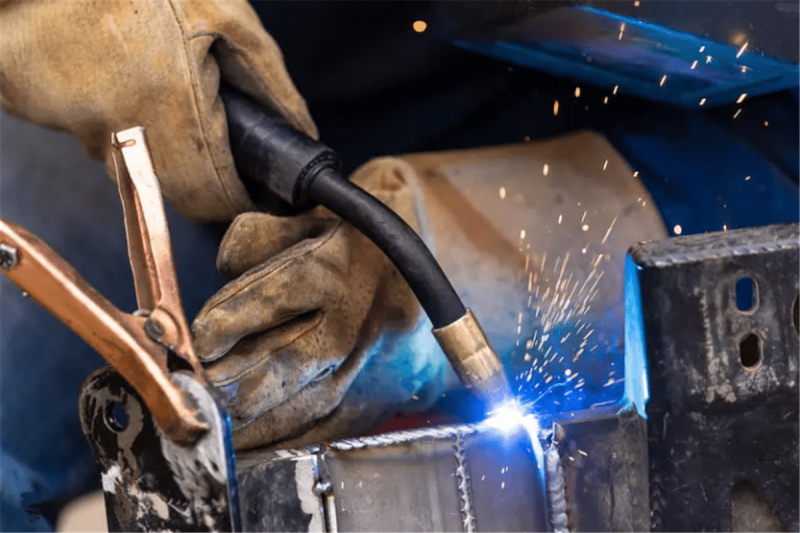
What is MIG Welding?
Working principle of MIG welding
What materials can MIG welding be used for?
MIG (Metal Inert Gas) welding, also known as Gas Metal Arc Welding (GMAW), is a versatile welding process that can be used for a variety of materials. The most common materials for MIG welding include:
- Carbon Steel: MIG welding is frequently used for welding carbon steel. It’s applicable for both thin and thick sections.
- Stainless Steel: MIG welding is suitable for stainless steel, making it widely used in industries where corrosion resistance is essential.
- Aluminum: MIG welding can be used for aluminum, but it requires special considerations, such as using a spool gun or push-pull system to feed the softer aluminum wire without it tangling.
- Nickel Alloys: MIG welding is employed for welding nickel alloys, which are commonly used in industries such as aerospace and chemical processing.
- Copper and Copper Alloys: MIG welding can be used for welding copper and copper alloys, although it may require special techniques and equipment.
- Other Alloys: MIG welding can be adapted for various alloys based on the specific welding wire and shielding gas used.
What types of MIG welding are there?
MIG welding encompasses a variety of techniques and variations to suit different applications and materials. The choice of MIG welding technique depends on factors such as material thickness, joint configuration, welding position, and the desired welding characteristics. Welders often select the appropriate mode based on the specific requirements of the welding project. Here are some common types of MIG welding:
- Short Circuit Transfer: In this mode, the welding wire touches the welding puddle, causing a short circuit. This results in a controlled transfer of small droplets across the arc. Short circuit transfer is suitable for welding thin materials and is often used in automotive and sheet metal applications.
- Globular Transfer: In globular transfer, larger drops of molten metal transfer across the arc, creating a more prominent arc and spatter. It is typically used for welding thicker materials and may require higher voltage settings.
- Spray Transfer: Spray transfer involves a steady stream of tiny molten droplets being transferred across the arc in a spray pattern. This mode is used for welding thicker materials at higher amperages, providing better penetration and higher deposition rates.
- Pulsed MIG Welding: Pulsed MIG welding combines the benefits of spray transfer and short circuit transfer. It uses a pulsing current to control the heat input and reduce the overall heat-affected zone. Pulsed MIG is suitable for thin materials, out-of-position welding, and applications requiring precise control.
- Surface Tension Transfer (STT): Surface Tension Transfer is a variation of short circuit transfer that utilizes low voltage and high current. It’s designed to provide better control over the welding process, particularly when welding thin materials.
- Cold Metal Transfer (CMT): Cold Metal Transfer is a low-heat transfer process that minimizes heat input and distortion. It is often used for welding thin materials and is suitable for applications where precise control is essential.
- Modified Short Circuit Transfer: Modified short circuit transfer variations involve adjustments to the welding parameters to optimize performance for specific applications, such as positional welding or specific material thicknesses.
- Axial Spray Transfer: Axial spray transfer is a variation of spray transfer where the arc is directed axially, resulting in improved penetration and control.
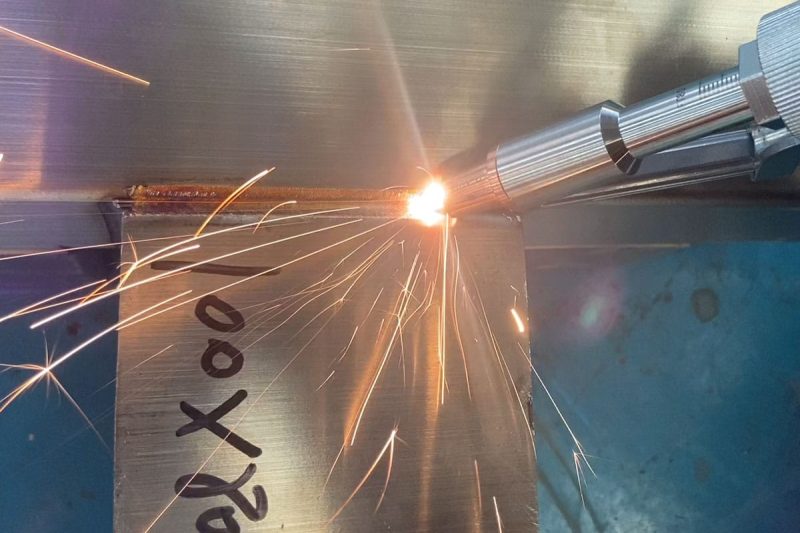
Laser Welding VS MIG Welding
Welding Process
- Laser welding: Utilizes a highly focused laser beam as the heat source. The laser beam can be precisely controlled and directed to the welding area. Provides precise and concentrated heat, allowing for fine welding in various materials.
- MIG welding: Uses a consumable wire electrode and a shielding gas to create an electric arc as the heat source. Offers good penetration and is suitable for thicker materials.
Precision and Accuracy
- Laser welding: Offers high precision and accuracy, making it suitable for delicate and intricate welds. Well-suited for applications requiring minimal heat-affected zones and precise control over the welding process.
- MIG welding: Generally offers good penetration, but the heat affected zone may be wider. Suitable for thicker materials, ideal for structural and heavy-duty applications.
Weld Quality
- Laser welding: Typically produces high-quality welds with minimal distortion and a narrow heat-affected zone. Ideal for applications where weld quality and aesthetics are crucial.
- MIG welding: Can produce strong and structurally sound welds, but the heat-affected zone may be larger compared to laser welding, which may lead to more significant distortion in certain applications. Suitable for applications where high-strength welds are essential.
Speed Ability
- Laser welding: The concentrated heat source of a laser beam enables faster welding speeds, especially in applications like seam welding or spot welding. Faster welding speeds may contribute to increased production efficiency.
- MIG welding: This can be a relatively fast process, especially in applications where speed is important. Suitable for high cladding rates and rapid welding.
Automation Ability
- Laser welding: Easily integrated into automated systems for high-volume production. Well-suited for industrial applications where automation and precision are critical.
- MIG welding: Can be automated to some extent, but may not be as easily automated as laser welding. Versatile for both manual and semi-automated processes.
Machine Cost
- Laser Welding Machine: The initial cost is generally more expensive than MIG welding equipment, potentially posing a barrier for smaller businesses or individual welders.
- MIG Welding Machine: Typically more affordable than laser welding systems, making it accessible for a broader range of users.
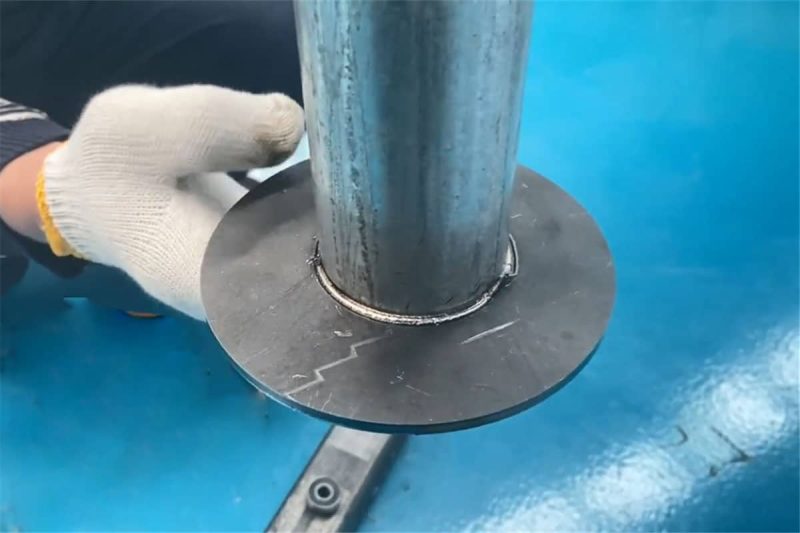
How to Choose The Right Welding Process
Material Type and Thickness
- Thin materials: Laser welding excels in welding thin materials with high precision, making it ideal for applications like electronics.
- Thick materials: MIG welding, with its higher heat input, is more suitable for thicker materials commonly found in construction and heavy industries.
Cost Considerations
- Initial investment: Laser welding equipment tends to have a higher upfront cost, making MIG welding a cost-effective solution for specific welding needs.
- Operational costs: Factors such as consumable costs, energy efficiency, and maintenance should be weighed when evaluating the long-term operational costs of each welding method.
Production Speed and Efficiency
- High-volume production: Laser welding’s faster welding speeds and automation capabilities make it beneficial for high-volume production where efficiency is critical.
- Customization and prototyping: MIG welding, with its versatility and cost-effectiveness, is well-suited for customization and prototyping, where the focus may be on flexibility rather than speed.
Industries and Applications
- Aerospace: Laser welding’s precision and minimal distortion make it suitable for aerospace applications, where tight tolerances and high-quality welds are crucial.
- Electronics: The ability to weld small and delicate components makes laser welding a preferred choice in the electronics industry.
- Medical devices: Laser welding is widely used in the production of medical devices due to its precision and ability to work with biocompatible materials.
- Automotive: MIG welding is commonly used in the automotive industry for its versatility and ability to handle various materials and thicknesses.
- Construction: The cost-effectiveness and versatility of MIG welding make it a go-to method for construction projects involving structural steel.
- General fabrication: MIG welding is widely adopted in general fabrication workshops for its ease of use and suitability for a wide range of applications.
Summarize
- [email protected]
- [email protected]
- +86-19963414011
- No. 3 Zone A, Lunzhen Industrial Zone,Yucheng City , Shandong Province.
